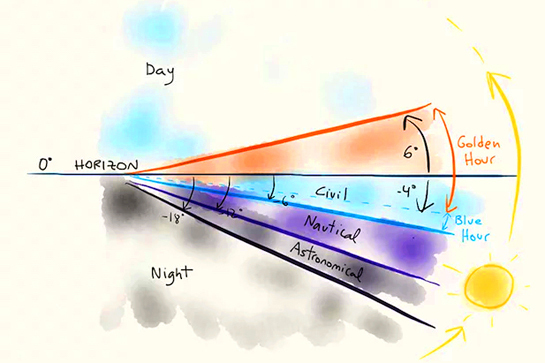Talking about photo exhibit categories
The five categories for this year’s Photography Exhibit for the Van Wert County Fair are: Sports in Motion, Living Creatures, Transportation, and Shapes. This week’s topic is the last in that list, Night Time/Low Light.
After a Google search, I learned there are degrees of twilight, depending on weather conditions, the tilt of the earth, pollution, particles in the air, and where on the earth you plan to do your photography for this category.
Using the illustration as a guide, the Civil Twilight is when the sun is zero degrees above the horizon to when the center of the sun is 6 degrees below the horizon. It is termed the Civil period because there is still sufficient light for people to be out and about. At the end of this time frame, streetlights and headlights will start to come on but will not be overpowering in your photograph.

Nautical Twilight is when the center of the sun is 6 to 12 degrees below the horizon. It is termed the Nautical period because if weather conditions are good, sailors should be able to plot courses by the stars and make out land masses on the horizon. Artificial lights will be more prominent, but nearby structures will still be visible.
Astronomical Twilight is when the center of the sun is 12 to 18 degrees below the horizon.
There will be no color in the sky and stars should be visible for study if there’s no nearby light pollution. If at sea, you won’t be able to see the horizon. Astronomers can do their studies without having to work so late. Night begins as the center of the sun drops below the 18-degree level.
You can begin shooting when the sun drops below the horizon by definition of low light. In addition to cityscapes and landscapes, candlelight and stage performances could also be included in your list of potential photos.
Some things to keep in mind would be: As it gets later, a tripod and self-timer become more important to combat camera shake. Increase your ISO settings and use a variety of lens openings to get the best exposure. RAW will provide the greatest control over adjusting your photo. Color in the sky fades as the sun drops lower, at least here where we live (as you travel closer to the poles, lighting changes to where you may not have a sunset).
POSTED: 03/09/18 at 9:46 am. FILED UNDER: Camera Club News







